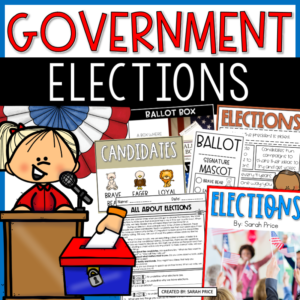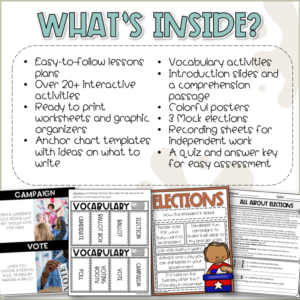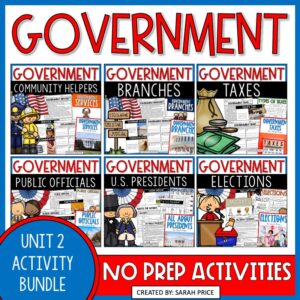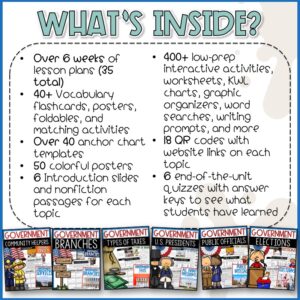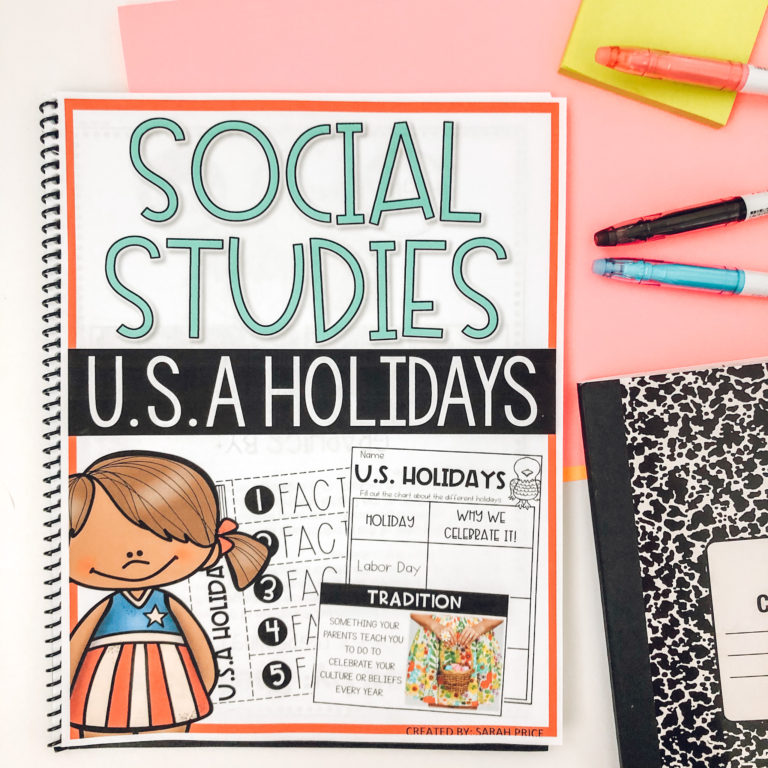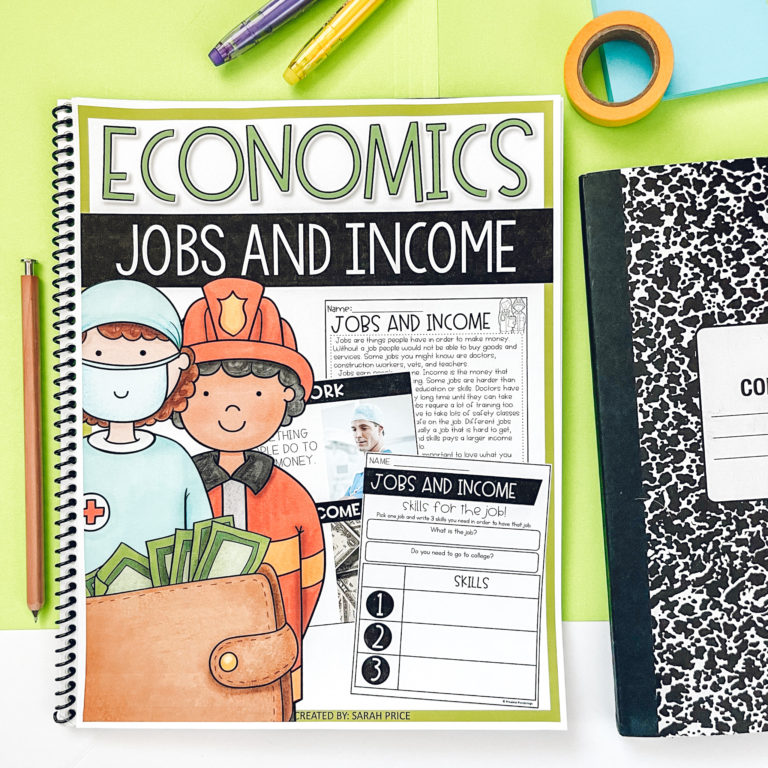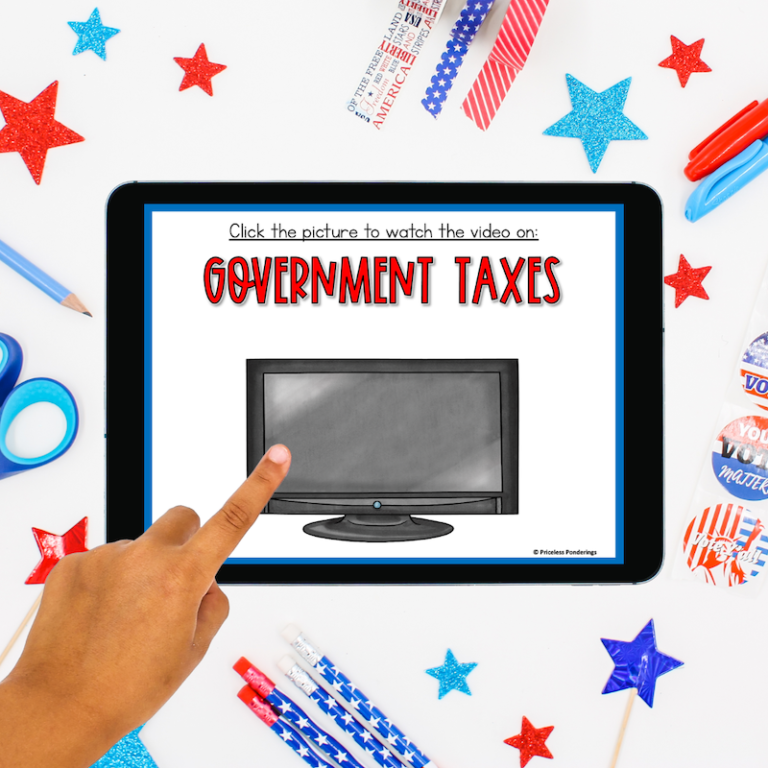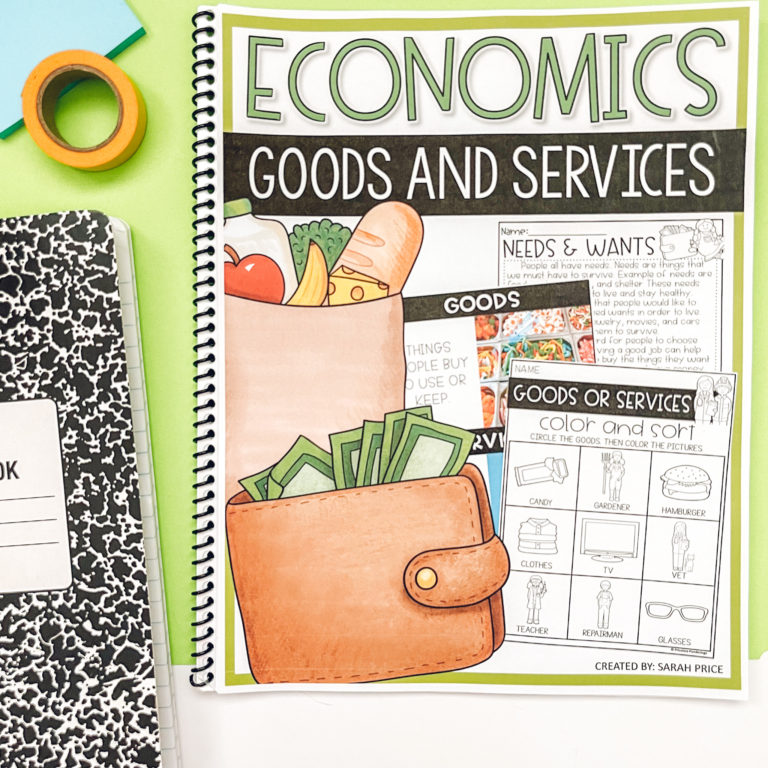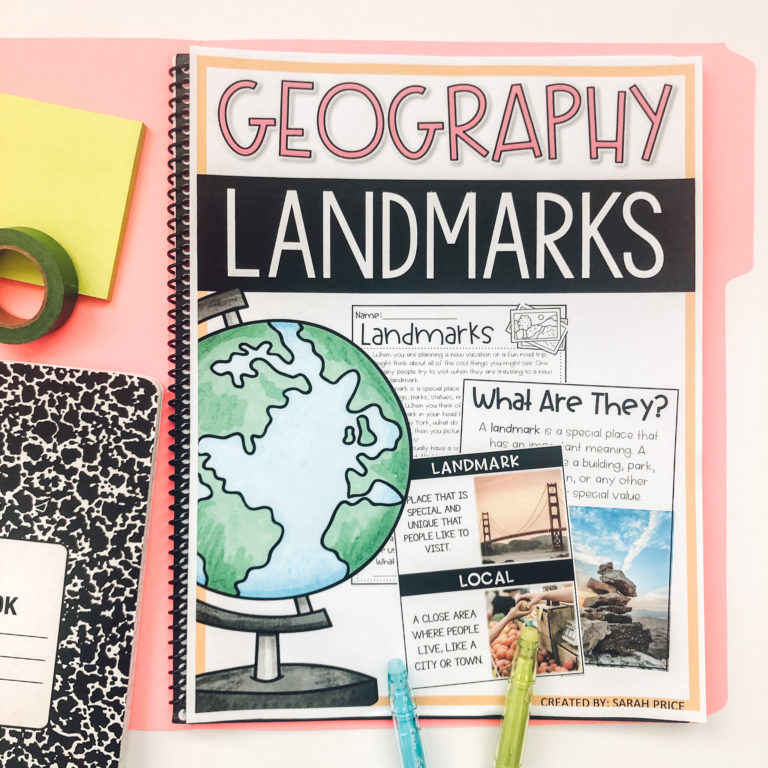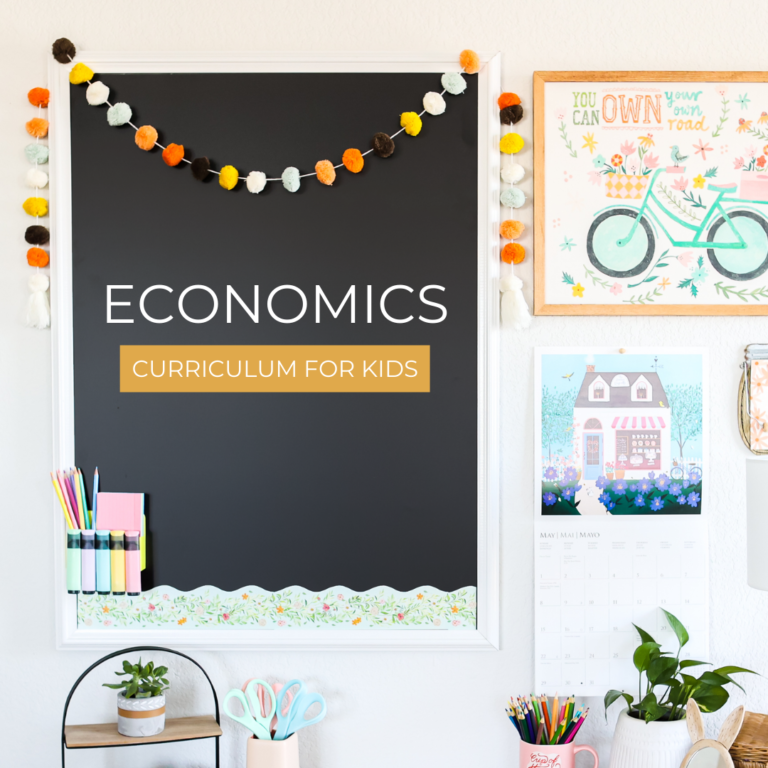Mock Elections For Kids: Easy Guide and Sample Ballot
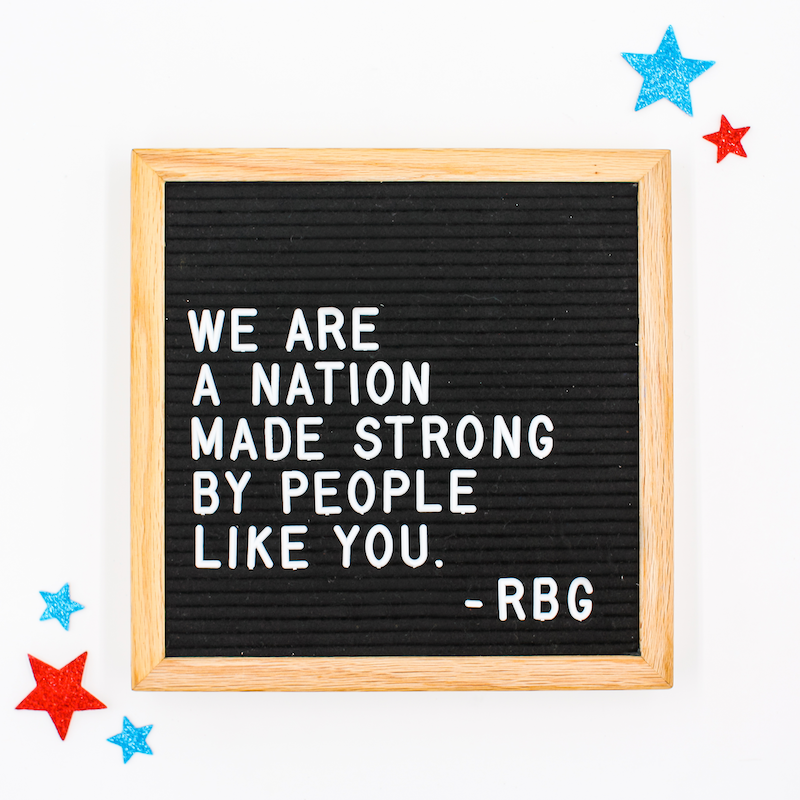
If you’re like me, you want to teach your kids about the world in a way that’s both fun and meaningful. One of the best ways to do that is by introducing them to elections! It may sound like a big topic for 2nd-4th graders, but trust me—it’s totally doable, and it’s super important! Whether you’re a teacher or a homeschooling parent (like me, juggling life with two kids!), a mock election with a printable sample ballot is a fun and interactive way to teach students what an election is and why it matters.
In this post, I’ll walk you through some engaging activities to help you teach your classroom or homeschool about voting and setting up your own mock elections.
Check out the activities from this post in my Classroom Mock Elections and Voting Unit!
Why Should We Teach Elections to Young Students?
It’s so important for kids to learn about elections early on! When kids understand how elections work, they’re more likely to grow into informed, responsible citizens. It also helps them learn how to make choices, understand different viewpoints, and recognize how their vote can impact big issues like health care, education, and more! Not to mention, talking about local elections and how they affect our everyday lives helps make it real for them.
Mock elections are a great way to help students grasp these ideas. They can learn about Election Day, early voting, ballot measures, and even what goes on behind the scenes at a polling place. For older grades you can even create discussions around what happens in the most-populated cities during a general election and compare it to less populated areas. And don’t worry, I’ve got lots of ideas to make this topic engaging for young kids!
How to Create a Mock Election in Your Classroom (or at Home!)
Step 1: Share Some Basic Election Information
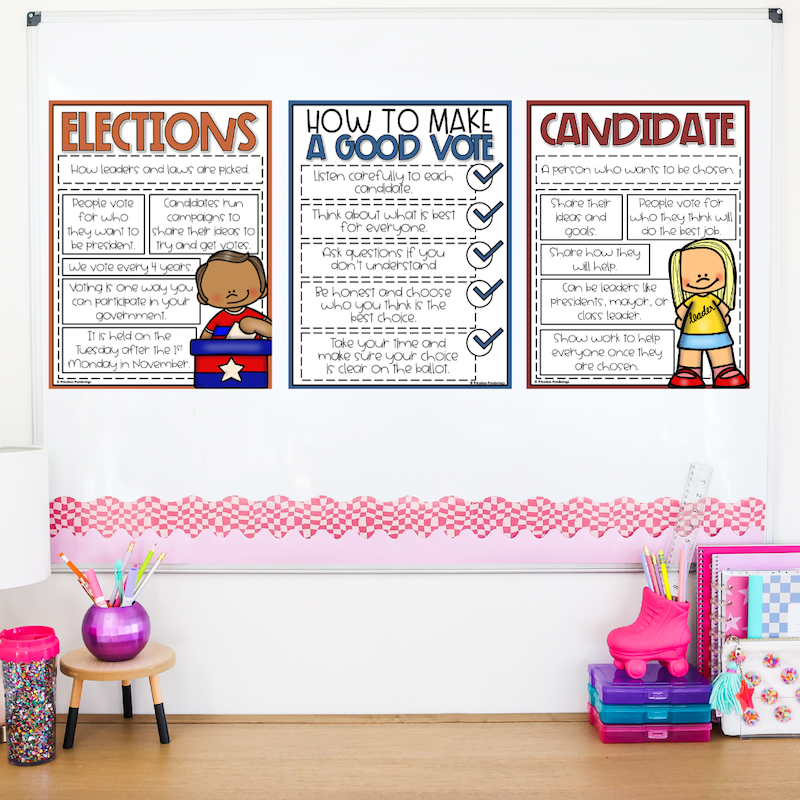
First, let’s start by giving our kids a simple explanation of what an election is. Use kid-friendly terms to explain that elections are how people choose leaders or decide on important issues (aka ballot measures). You can introduce terms like polling place, next election, and voter guides to help them understand the process. The goal here is to make them feel excited about voting!
A great way to share these new terms is by creating an anchor chart! It’s super easy to put together, and it gives your students a visual way to learn new vocabulary words. Plus, it’s a huge help for your ELL and visual learners—they’ll be able to refer back to it as you dive into the topic, making the lesson so much more accessible and engaging for everyone! Grab a copy of these traceable anchor charts to help you get started.
Step 2: Use a Printable Sample Ballot (It’s So Fun!)
This is where the fun begins! Once the kids understand the basics, give them a printable sample ballot to practice voting. You can create one with simple choices, like picking a class mascot or deciding on a special treat for the day. This helps kids learn how to fill out a ballot and make decisions. Trust me, they’ll love it!
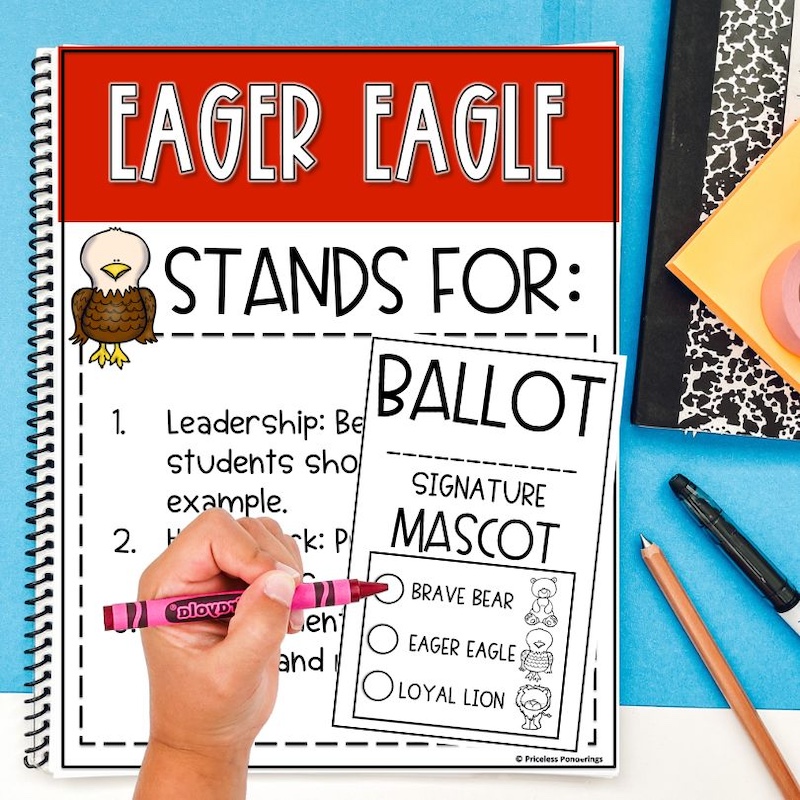
You could even take it a step further and create an interactive sample ballot to let them feel like they’re in a real vote center!
Step 3: Use Voter Guides to Introduce the Candidates
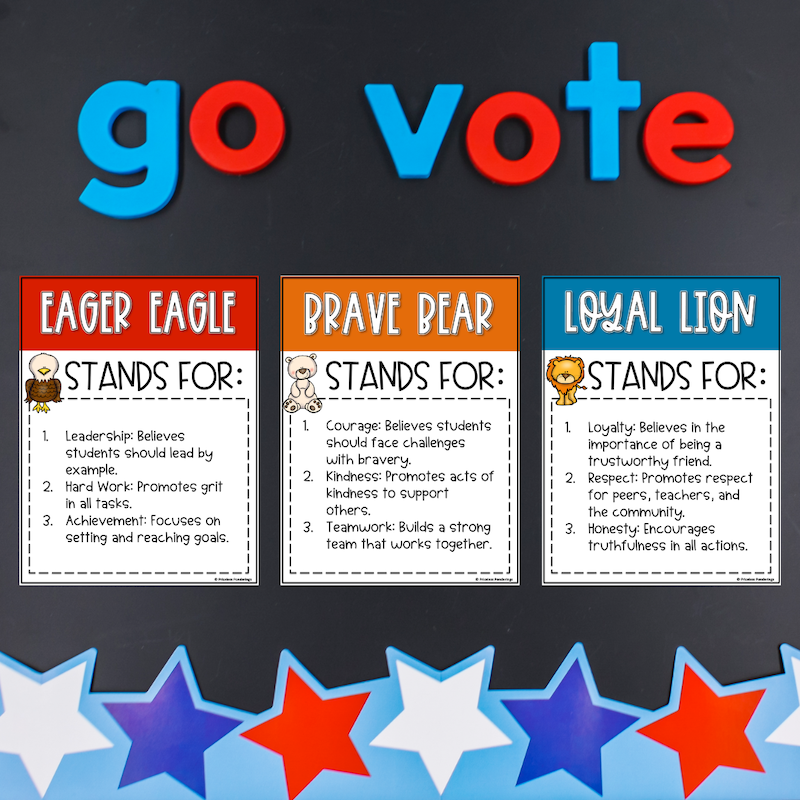
Another great tool to bring into the classroom is voter guides. These are often sent out before elections to inform voters about candidates, and what will be on the ballot. You can create a simple guide for your mock election, summarizing the options in a kid-friendly way. This will help students feel more informed when it’s time to make their decisions.
Step 4: Assign Poll Workers and Make a Voting Center
Another concept to introduce is a poll worker, as students can take turns acting as one in your mock election. They can help set up a new centralized place (like a vote center) for their classmates to vote. This is a great way to show them how voting can take place outside of the traditional polling place. You’ll be amazed at how excited they’ll get playing these roles!
Step 5: Teach About Different Elections
After the mock election, talk about the different types of elections, like general elections and special elections. Explain that while some elections decide on big national issues, local elections are just as important because they affect things closer to home—like parks, schools, and local laws. You could even show them how public records track who wins an election and why it’s important for transparency.
It’s also useful to explain the concept of early voting, where some people cast their ballots before Election Day to avoid long lines. Students will see the value in having options, and it helps them better understand how different election information gets disseminated to registered voters in preparation for the upcoming election.
Why Understanding Personal and Sensitive Information Is Important
Part of the election process is keeping personal information safe, like names or email addresses. This is the perfect opportunity to explain to kids that while voting is a right, protecting sensitive information is important, too. You can teach them the difference between general information (like being a registered voter) and private details that should stay secure. And while we don’t want to dive into legal advice, it’s a good chance to show why privacy matters in elections and beyond!
Engaging Discussions Around Political Parties and Local Elections
Once students have cast their votes, open up a dialogue about political parties. Explain how people often align themselves with groups that share similar beliefs and how these parties can influence the choices available on the ballot. Kids may not understand every detail yet, but introducing these terms helps plant the seeds for future learning.
Wrap-Up: Let’s Build Future Voters!
Mock elections are a huge help in making this topic fun and educational for young learners. By using a printable sample ballot, creating a vote center, and letting them play the role of poll workers, you’ll bring the election process to life. Your students (or kiddos at home!) will be learning while having a blast, and you’ll be setting them up to become informed, engaged voters when they grow up. Who knows? They might even ask when the next election is after all this excitement!
So, why wait? Dive into this fun, interactive lesson, and watch your students’ (or kids’) curiosity grow as they learn how their vote can make a difference in the United States. We’re helping to build the future—one mock election at a time!
For a copy of the resources used in this post you can grab them in my shop or click the link HERE!
Shop this post!
Looking for more government activities
6 SIMPLE GOVERNMENT SERVICES AND COMMUNITY HELPERS ACTIVITIES FOR YOUR CLASS
ALL ABOUT THE PRESIDENTS OF THE UNITED STATES: 8 EXCITING ACTIVITIES

